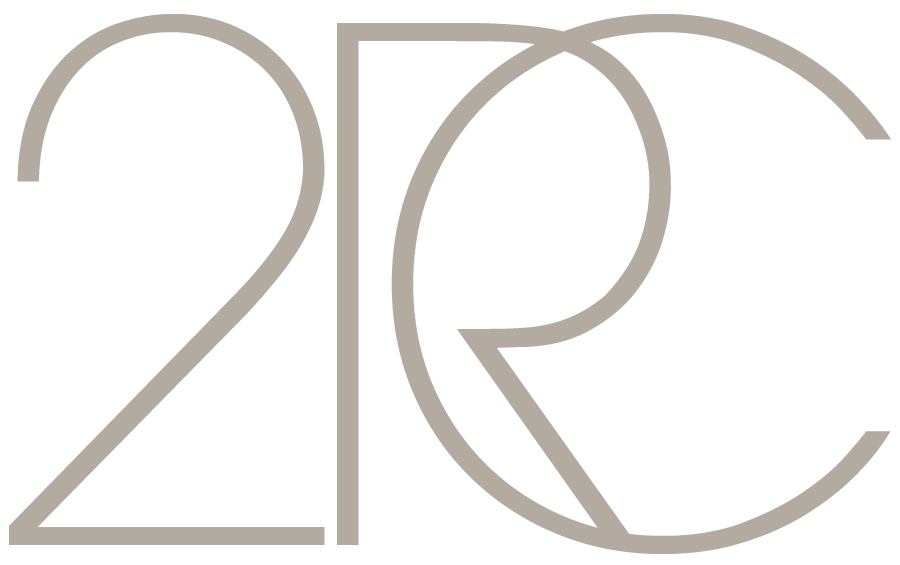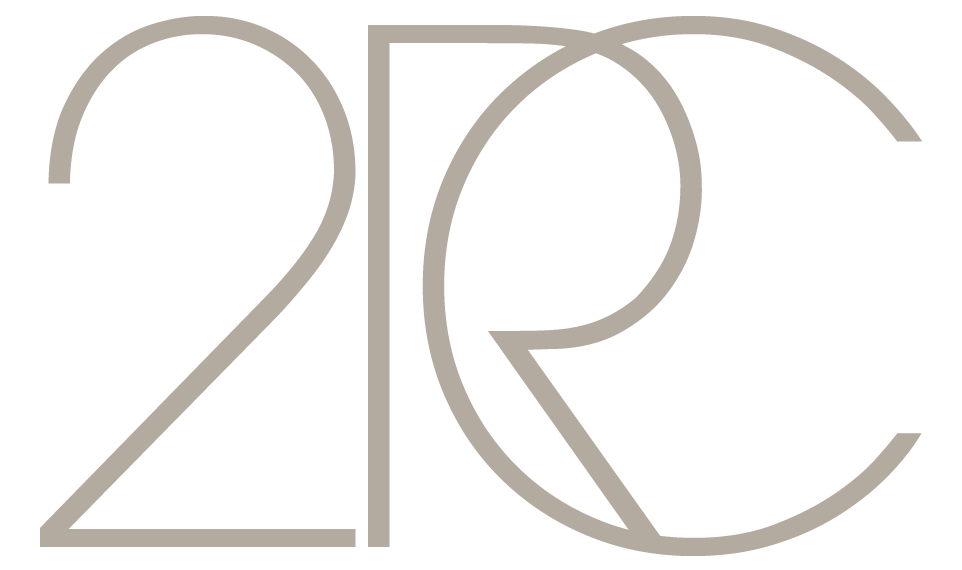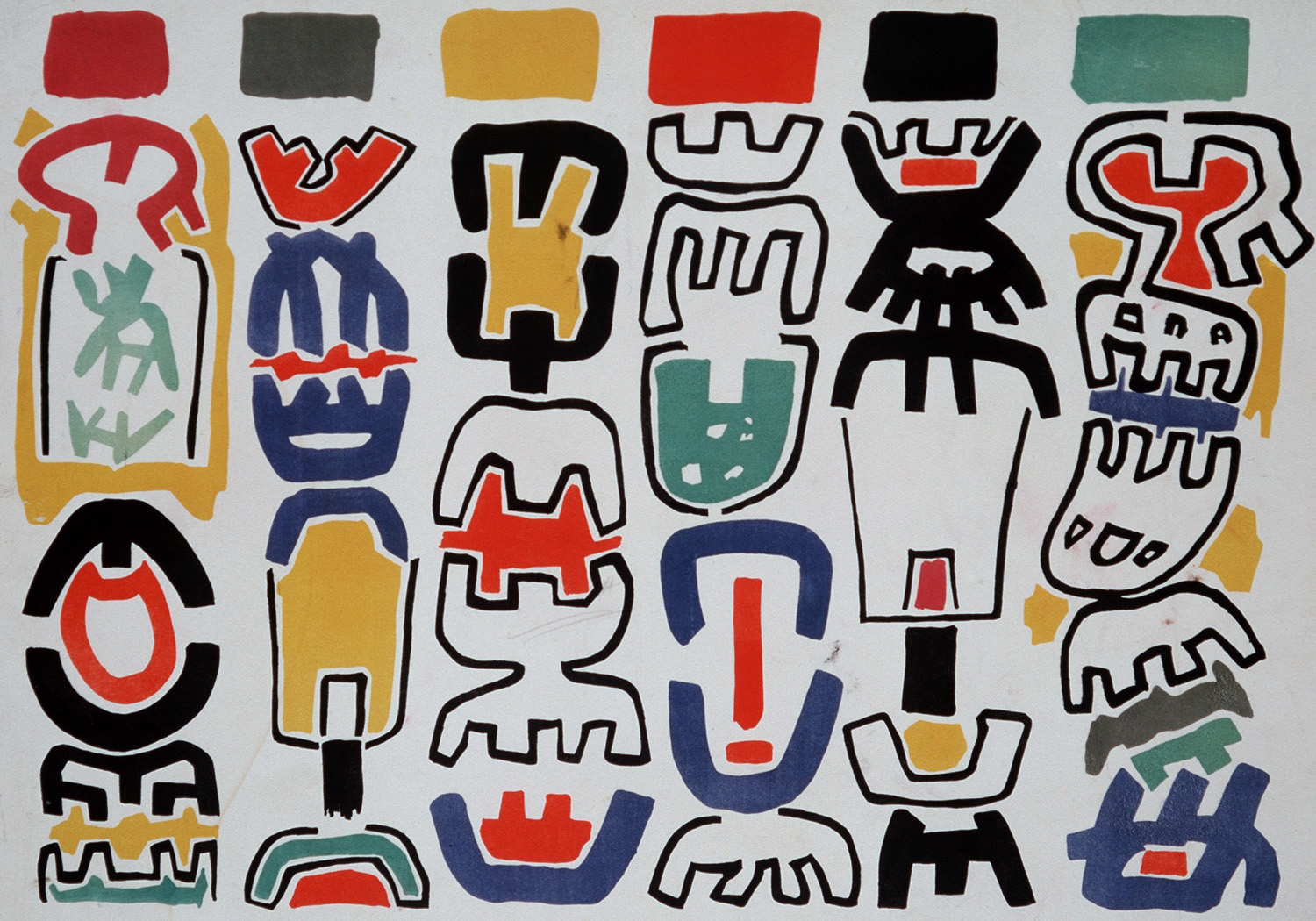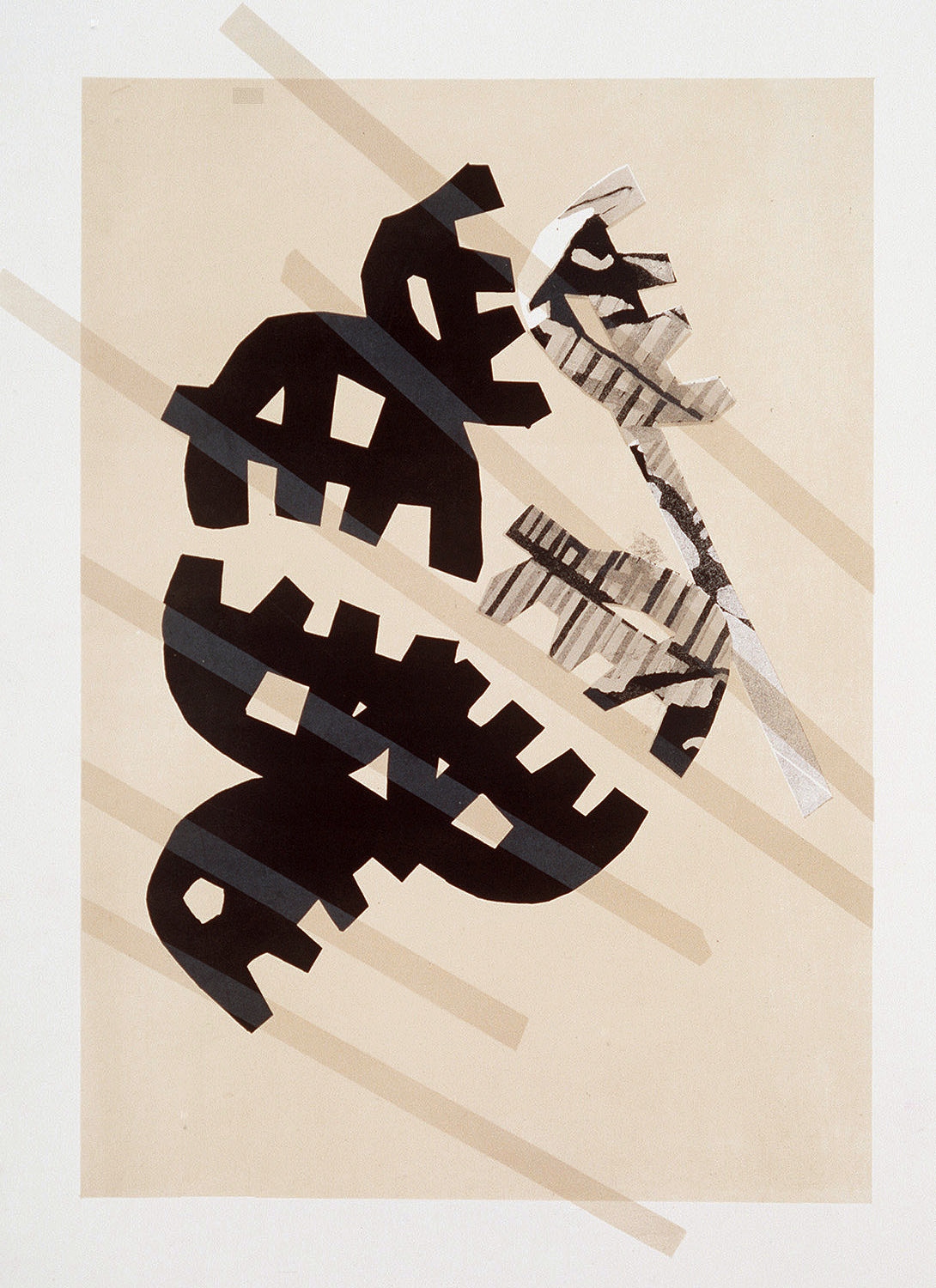Giuseppe Capogrossi
graphic works
2RC Rome - Milan - 1983
Text by Lorenza Trucchi
In his old studio in vicolo San Nicola da Tolentino, a few steps from piazza Barberini, Capogrossi had stuck the catalogs of his exhibitions as best he could on a small wall. Among others, that of Vehemence confrontées, organized in Paris in XNUMX by Michel Tapié, at the Galerie Nina Dausset stood out. Capogrossi had been invited there, the only Italian artist, together with Wais, Hartung, Mathieu, Bryen, Riopelle and Pollock and De Koening, also for the first time in Paris. It was a historical exhibition: those painters, although very different, placed side by side in a stylistically heterogeneous but certainly not illegitimate comparison, certainly very stimulating, announced and synthesized that art autre that Tapié had to explain and unfold a year later, in his famous manifesto album and which today, many years later, still seems to me to be one of the most enlightening propositions on the amazing adventure of immediately post-war art: "Le problème, wrote the French critic, consists of pas à remplacer un thème figuratif par une absence de thème […], mais bien à faire une œuvre, avec ou sans thème, devant laquelle, on s'aperçoit petit à petit que l'on perd pied, que l'on es appellé à entrer en extase ou en démence… “.
Capogrossi had probably felt the need for adventure, the desire to change one's skin as a cultured, wise, traditional painter for some time. Perhaps his disobedience was born with his own obedience. Capogrossi was a well-known and successful painter since the time of the "Roman School". However, in his painting of the 30s and 40s, figurative and tonal, reality was neither seen nor told realistically, but exposed and composed paying particular attention to the concordance of all the lexical components. The lesson was still that of “Valeri Plastici”: in a vaguely metaphysical aura a perfect identity was sought between space, color, light. It is therefore possible that for this detachment from the theme, for this innate aversion towards an illustrative realism, Capogrossi had already long been predisposed to the abstract, to a painting of self-representation, valid in itself. The war marked the culmination of this tendency, which soon turned into malaise, into crisis. In fact, the painter felt that the world was changing, that even the houses that surrounded him no longer answered his questions or corresponded to his feelings. But he was not a man who loved sensational gestures, who asked for the endorsement of groups or the sanction of posters. Thus he continued to stay in his studio, increasingly empty and inhospitable, with no more models, no longer the familiar objects that had animated his calibrated, harmonious compositions for so many years. Capogrossi's year zero culminated with his personal exhibition at the Galleria del Secolo: January 1950. Since then, as Seuphor said, “Capogrossi ceased to be an excellent painter and became a creator”.
This conversion of his had been so radical and unexpected that it became a sensational event for the public and one of the most difficult and debated problems for critics. For his part, Capogrossi never made comments or statements. And even later, even to the most devoted friends including the poets Ungaretti, Mendes, Michaux, Sinisgalli, Libero De Libero, who asked him something about his work, he always gave the same answer, the one that Galileo Galilei gave to the Grand Duke of Tuscany: “I try and try again”. Only once with the modesty and grace that were his own, Capogrossi described, almost in a parable, the distant genesis of his sign, and it is a birth where poetry and reason are identified in an instinctive but absolute need for truth: " I was ten years old and I was in Rome. One day I went with my mother to an institution for the blind. In one room two children were drawing. I approached: the sheets were full of small black signs, a sort of mysterious alphabet, but so vibrant that although at that age I didn't think about art at all, I felt a deep emotion. I have felt since then that signs are not necessarily the image of something seen, but can express something that is within us, perhaps the tension that comes from being immersed in reality? At that precise moment, I believe, my artistic vocation was born; and the classical studies that, by family tradition, I had to follow until I got a degree in law, were unable to extinguish it. I devoted myself entirely to painting and was for many years and with considerable success a figurative painter. There are still many people who regret my lost talent, while the most benevolent marvel at my conversion to abstract painting. However, I am convinced that I have not substantially changed my painting, but that I have only clarified it. In fact, from the beginning I tried not to be satisfied with the appearance of nature: I always thought that space is a reality within our consciousness, and I set out to define it. At the beginning I used natural images, comparisons or affinities derived from the visible world: then I tried to directly express the sense of the space that was inside me and that I realized by performing the acts of every day. I cannot forget the little blind man who with his vibrating and mute signs found the shape of the space that his eyes did not see but that nevertheless intensely felt and lived ... The blind boy, my first teacher, represented as time the space that he could not see . My ambition is to help men see what their eyes do not perceive: the perspective of the space in which their opinions and actions are born "
Essentially based on the sign, a sign that is not an image, nor a geometric figure, nor an ideogram, nor a compendiary or reductive abbreviation of naturalistic elements, but rather seed and cell, voice and alphabet of his language, the art of Capogrossi is per self graphics. Hence the importance of these sheets collected by the 2RC of Rome, dated from 1950 to 1972 which, without qualitative differences, complement the artist's greater pictorial production, often replacing the test bench. For Capogrossi intact there is no substantial difference between painting and engraving. The one and the other developing on the plane. Both of them favoring the support, the surface, be it canvas or paper. Both based on the correlation between sign and space. If these constitutive elements may seem simple, Capogrossi's speech is not simplistic. Indeed the real prodigy of his art lies in the vast and very rich orchestration of these few elements. In knowing how to communicate many things, in being able to express so many and so different states of mind, joyful, serene, dramatic from time to time, in offering us so many and so changing perceptual responses, always starting from that single matrix, from that very fruitful seed which is its sign, which develops, lives, acts, always proliferates in relation to space. Making a bare, elementary sign a ductile but profound (even initiatory) means of research and communication, was Capogrossi's greatest and most revolutionary achievement. Constant but never the same, indeed very changeable in its incessant, imaginative variation in relation to color, size, location, dynamic rhythm, its thickening or rarefying, this sign-object gives a phenomenological value to space, which in turn is transformed into “Field”, ie in an extension defined by the usability of a system of relationships. We are therefore no longer in the rational and structural sphere of neoplasticism where the images still assumed an architectural value, but in the changing, ambiguous, energetic area of the informal. An area difficult to define and circumscribe but to which all the non-figurative artists engaged in researches of matter, gesture, sign belong, often concretized in a painting of “fabric”, in a continuum without caesuras and solutions.
If it is possible to place Capogrossi among the major protagonists of the informal for his spatial sign research, as it is legitimate to indicate him as one of the precursors of optical art (especially in the series of paintings and black and white engravings where more intense and of movement, of mild kineticism), it is more difficult to find the historical sources of this art so current and so unusual. Capogrossi has often been compared to Mondrian, but it is an impossible comparison since the neoplastic geometry of the Dutch painter is the extreme point of a gradual, rational process of naturalistic purification (denaturalizing is for Mondrian to deepen, and to deepen is to simplify), while the sign, never Euclidean, by Capogrossi is instead the starting point towards dialogue, communication, even giving itself as a “signal”. If anything, it is to Arp who in his "reliefs" intuitively decorates the space by flattening it, or to the more ideogrammatic Mirò or to Klee, the sporadic inventor of sublime alphabets, that Capogrossi can be indirectly approached. And perhaps even more is Malevich: the first artist to speak in his Suprematism of a dynamic geometry, based on forms controlled by sentiment and moved in pure spaces by more magical than rational laws. However, what in Malevich is still geometry, albeit not derived as in neoplasticism, in Capogrossi becomes antigeometry, pure algebra, if anything. And it will be enough of this algebra to grasp the secret mechanism to understand its message in code as well. A message, on par, of total humanity and high pictorial civilization.
